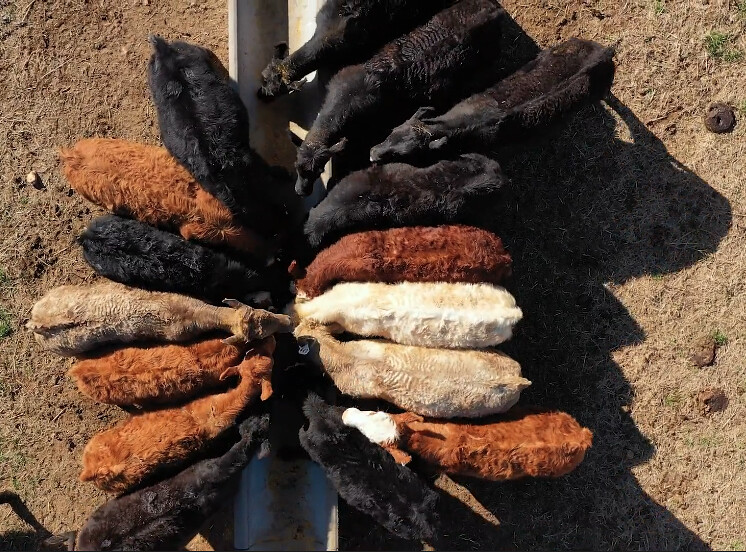Cattle markets react to proposed tariff changes; consumer beef prices expected to remain steady in the short term
Oct. 29, 2025
By Ryan McGeeney
U of A System Division of Agriculture
Fast Facts:
- U.S. considering raising Argentinian beef quota
- Live cattle futures contracts fell sharply after announcement
- Market fundamentals remain unchanged
(604 words)
(Newsrooms: Download file art)
LITTLE ROCK — While recent headlines suggesting changes in U.S. tariffs on South American beef imports are raising eyebrows and nudging markets, the fundamentals of supply and demand will remain intact for beef producers in Arkansas and elsewhere for the foreseeable future, cattle market experts said Monday.
On Oct. 16, U.S. President Donald J. Trump suggested a plan to lower beef prices for American consumers was in the works. The proposal involves expanding the tariff rate quota on Argentinian beef from 20,000 metric tons to 80,000 metric tons, said James Mitchell, extension economist for the University of Arkansas System Division of Agriculture.
He said that while this would quadruple the amount of Argentinian beef entering the U.S. market, it would still be a minuscule portion of the overall U.S. beef market. A September report from the U.S. Department of Agriculture forecast U.S. beef imports at 5.4 billion pounds — just over 18 percent of total U.S. beef consumption.
However, Mitchell said, discussion of raising the Argentinian beef tariff quota is only one of several factors making cattle producers nervous.
“There are also talks of easing feeder cattle import restrictions on Mexico, which were put in place because of the New World Screwworm in Mexico,” Mitchell said. “Yesterday, news broke about discussions of easing tariffs on Brazil. Brazil has been a high market for U.S. beef imports the last few years as well.
“That’s three proposals that markets are having to sort through,” he said. “This has significantly impacted the futures market — and these markets are all connected. The futures market is going to have an impact on cash prices, although it’s too early to tell how big an impact that will have, but a negative impact is expected.”
Feeder and live cattle futures fell significantly over the 12 days following the Argentinian tariff announcement. The Chicago Mercantile Exchange December live cattle futures contract, for example, fell from about $247 per hundredweight on Oct. 16 to about $224 on Oct. 27. During that same timeframe, CME November feeder cattle futures fell from about $380 per hundredweight to below $339.
While market speculation is already cutting into producers’ profitability, Mitchell said that consumers won’t likely notice much change in grocery prices.
“We’re already importing quite a bit of beef, as a part of overall consumption,” he said. “But anything that moves the market is going to impact profitability in either direction.
“Part of the problem is that this is happening at a very bad time of year for our producers,” Mitchell said. “Most of our cattle operations have cows that calve in the spring, and those operations are selling calves in the fall. To the extent that these events spill over into the cash market and impact those cattle prices negatively, that will impact profitability.”
Beef prices in the U.S. have risen in recent years largely as a result of shrinking supply and steady demand. The U.S. total beef cattle inventory is at its lowest since 1951, with about 94.2 million head. The declining herd size, Mitchell said, is partly due to ongoing drought conditions, which make it more expensive to maintain herds through the winter.
“Droughts that impact fall grazing are a big problem and could stall some herd expansion,” Mitchell said. “It impacts when you have to start feeding hay and decisions about heifer retention and how many cows to keep through the fall and winter.
“It’s still going to be a record year for profitability,” he said. “This isn’t going to turn balance sheets from black to red. The fundamentals are still there, but we all need to pay close attention as markets learn more.”
To learn about extension programs in Arkansas, contact your local Cooperative Extension Service agent or visit www.uaex.uada.edu. Follow us on X and Instagram at @AR_Extension. To learn more about Division of Agriculture research, visit the Arkansas Agricultural Experiment Station website: https://aaes.uada.edu/. Follow on X at @ArkAgResearch. To learn more about the Division of Agriculture, visit https://uada.edu/. Follow us on X at @AgInArk.
About the Division of Agriculture
The University of Arkansas System Division of Agriculture’s mission is to strengthen agriculture, communities, and families by connecting trusted research to the adoption of best practices. Through the Agricultural Experiment Station and the Cooperative Extension Service, the Division of Agriculture conducts research and extension work within the nation’s historic land grant education system.
The Division of Agriculture is one of 20 entities within the University of Arkansas
System. It has offices in all 75 counties in Arkansas and faculty on three campuses.
Pursuant to 7 CFR § 15.3, the University of Arkansas System Division of Agriculture offers all its Extension and Research programs and services (including employment) without regard to race, color, sex, national origin, religion, age, disability, marital or veteran status, genetic information, sexual preference, pregnancy or any other legally protected status, and is an equal opportunity institution.
# # #
Media Contact:
Ryan McGeeney
rmcgeeney@uada.edu
501-671-2120
